In the late afternoon of August 8, 2018, hot gusty winds lifted off the sunbaked deserts of the Snake River Plain, 122 miles to the south of Alderspring and our summer grazing country of the wild and remote Hat Creek Ranges.
The oven dry winds blew up our valley and fanned a late afternoon firestorm on the already unstoppably ravenous Rabbit Foot Fire. That night, we watched from the back patio of the Alderspring Ranch house with binoculars, and observed, agape at the flame fronts that extended for miles over the headwater timber of Hat Creek. Orbs of pyrolytic gas exploded violently some 500 feet in the sky above the burning timber, lighting mountainsides five miles away. Violent upheavals of wind resulting from the flaming fire eruption carried logs, tree-tops and other burning debris up to 3 miles ahead of the flame front, igniting tinder dry forests with new fire that would eventually join the conflagration.
Many of you readers remember this, as I wrote first-hand accounts in our newsletters at the time it was happening last August. Thankfully, as many of you recall, we had proactively moved our beeves on horseback only days ahead of the inferno, when NOAA forecasts predicted the frontal shift that brought the south-westerly winds that propelled the Rabbit Foot into Alderspring territory.
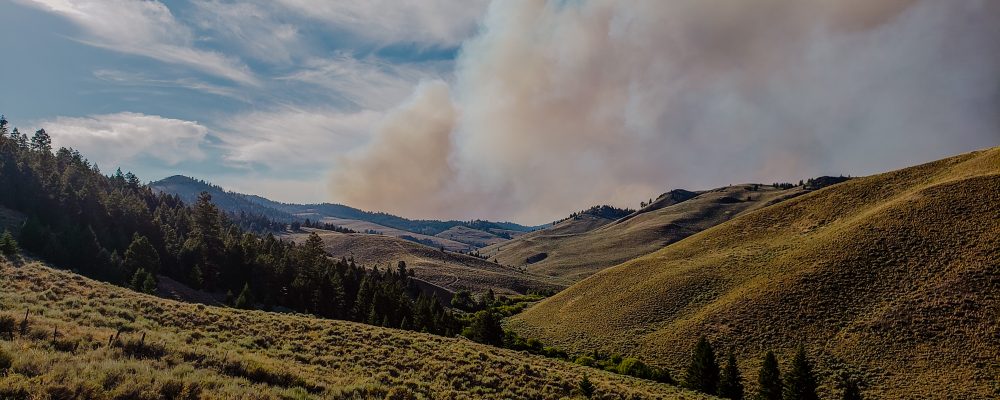
When the dust and smoke settled, Alderspring ended up with about 8000 acres burned out or our 46,000 acres of rangeland. 500 firefighters, 5 helicopters, 4 retardant bombers, 25 fire engines and 4 dozers could do next to nothing but cower in the face of the angry Rabbit. In the end, it was October and the snow that put it out.
As with the inferno itself, winter stormed into the country in one fell swoop. Wet and soggy firefighters folded up their tents, defeated but grateful, and stowed their gear and went home. And the snow blanket of the still smoldering forests made it impossible to get a firm fix on the aftermath. What burned? How much of our good grazing disappeared? Was the fire so hot that all soil life was gone? Had we even lost our organic matter?
And from simply a practical standpoint, where we had boundary fences, were they toast? We had no way of knowing.
Yesterday, we were able to find out. The beeves are already grazing the Hat Creek Country, but they are in the low elevations. Even last week, we couldn’t access the high ranges, because snow was still blocking the roads. But a little heat over the past week freed the trails in from icy winter’s cold grip, and we were able to find a way in.
It was a long road in, but so worth the drive. With Jess and Sam, I took a 4 wheel drive truck and some fencing materials and made the two hour drive across mountain and canyon dirt roads to crawl in there. Snow drifts still skirted the logging road, and spots of winter snow remained in the shaded forests. When we finally reached Hat Creek, it was a whitewater torrent of snowmelt, draining the ancient forests that stretched above it, culminating in the still uncracked dome of deep winter white that mantled the summit of Taylor Peak, at the head of the range.
Actually, much of it was forest no more.
As we picked our way higher into the headwaters country, and where the two tracks finally end in wilderness, the skeletons of once dense and green now stood along both sides of Hat Creek, standing grey ghosts in stark contrast to black soils.
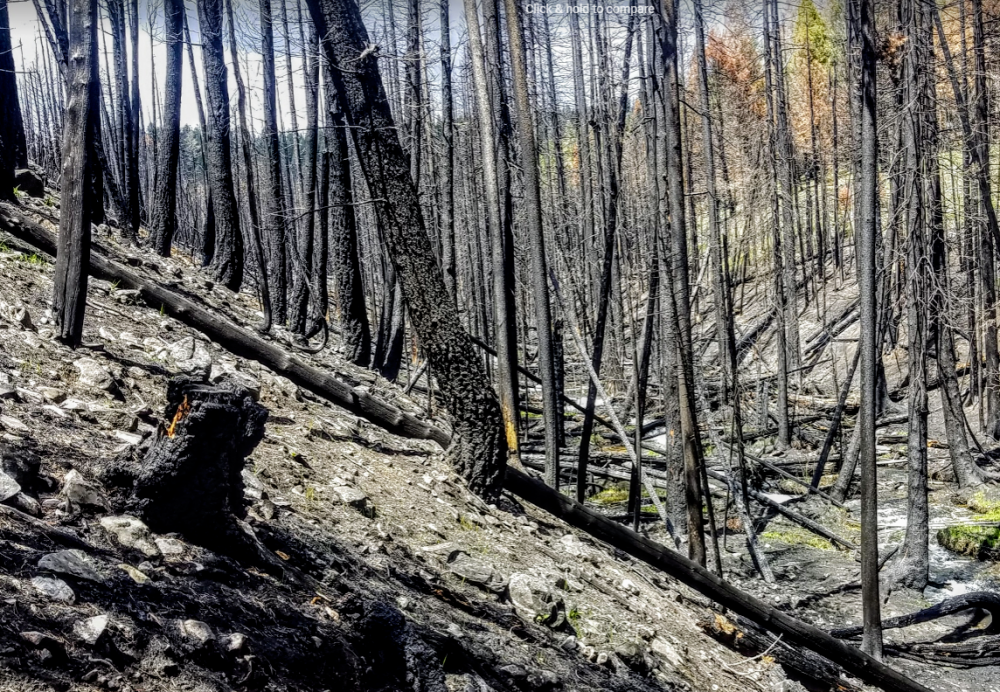
It was beautiful in an austere sort of way, but I wondered what the results were to Hat Creek itself. We’ve all heard of how wildfire can cause mudslides and transform pristine creeks to moving ribbons of muck.
Jess, Sam and I decided to hike across the burn area to look, while inspecting the fence line of our north boundary fence.
Unfortunately, the fence didn’t fare very well. Along most of it, the wire was laying in a tangled heap on the ground where either wooden posts incinerated or even the wire clips that held them to the metal fence posts literally evaporated in the firestorm.
But the creek was another story. The first sign that things were still functioning was that I spotted a lovely Dolly Varden trout in a deep and clear pool right in the middle of the burn. The forest was burned to the soil layer; all was black and dead looking, as was every single tree. One look at Sam’s light khaki cargo pants was enough to tell all was black. Evidently, he was planning on exporting some ash to the ranch that day, or at least to the well-worn seats of the pickup.
Back to the water. It was windowpane clear. Blue skies and black trees reflected in the still pools between the frothing falls; through them, you could spy the multicolored granitic gravels in the pond bottoms. No mud here.
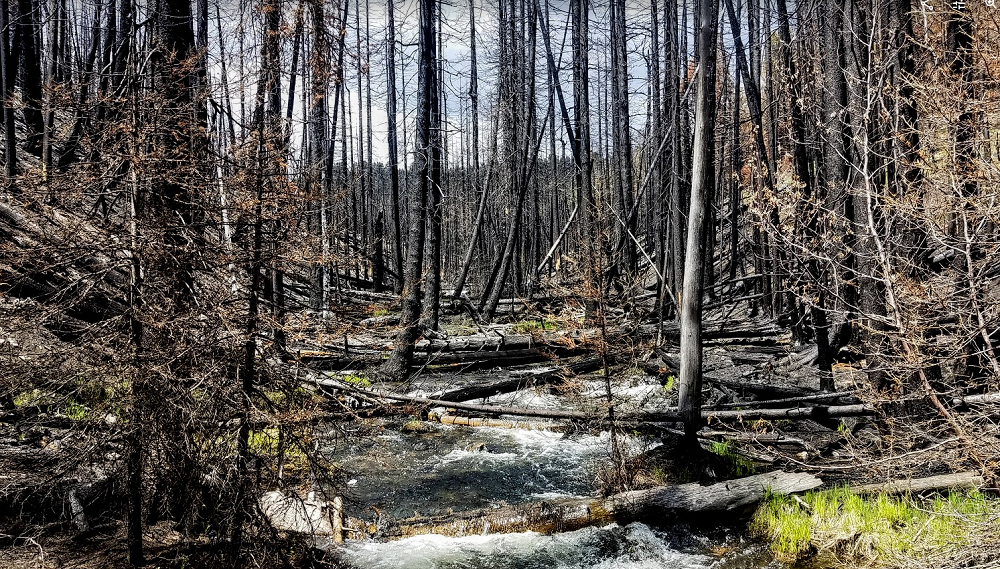
The reason, despite a heavy snow winter followed by weeks of rain?
I think first on the list is that before the fire, Hat Creek’s forest and ranges were comprised of intact vegetation, in good health. These forests have adapted with the presence of fire for millennia, and when we have enough vegetative cover and intact soil biota, they provide a buffer against the extreme heat of fire.
And the soil holding capabilities of roots, fungal hyphae, and other organisms still alive in the soil despite extreme heat, keep the soil on the mountain instead of in the creek. I knew it was still alive—because there, in the black, perennial grasses and flowers were already cropping up new starts of green in the middle of the moonscape of blackness.
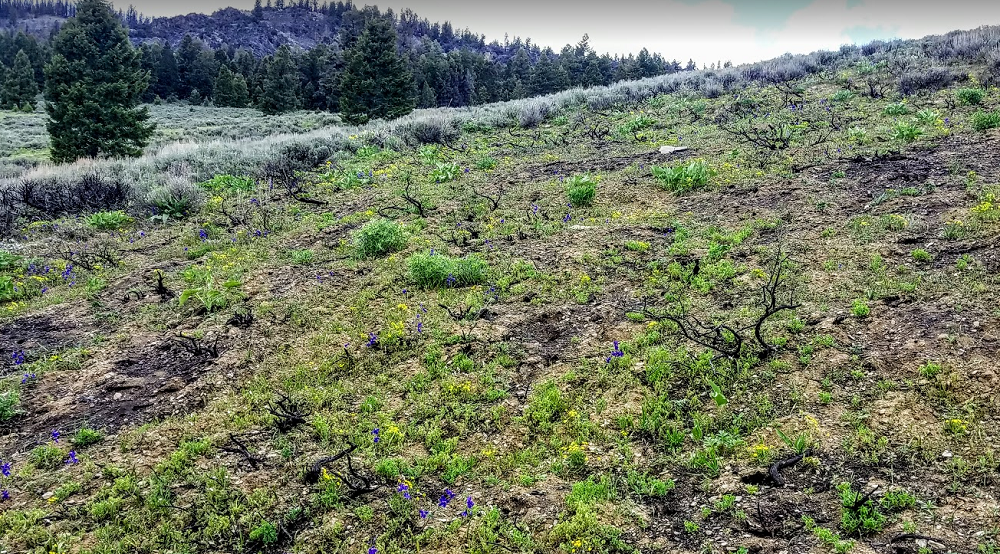
But there’s more, and it’s the stewards of the creek I’ll cite for that. They are the long toothed rodents that keep sediment from flowing anywhere downstream.
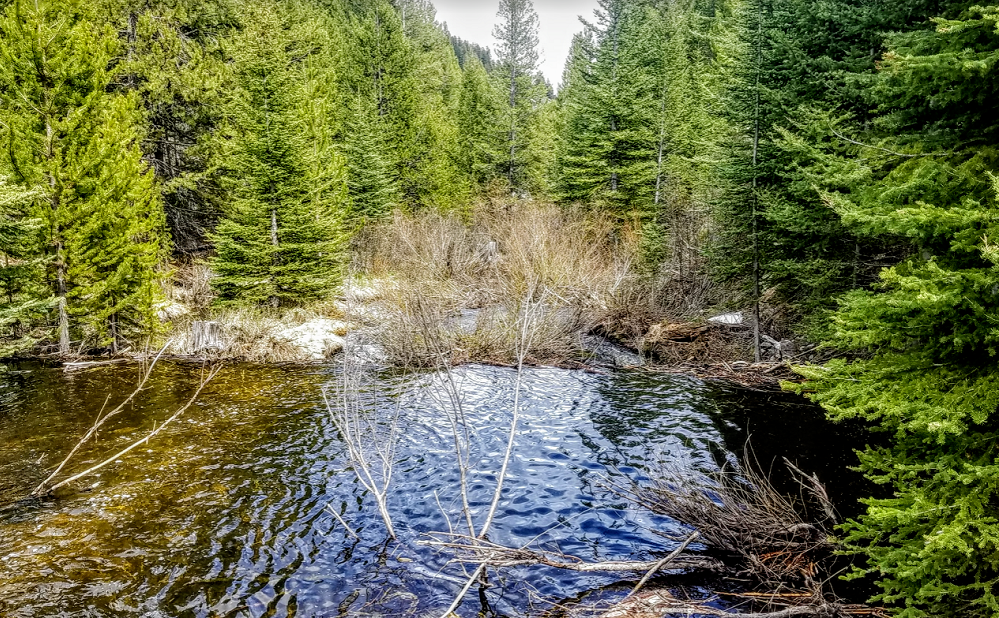
Among the largest of the buck toothed family of rodents: beavers. They somehow survived the heat and the smoke, and continued to build bulwarks against sediment flow downstream. Their dams created impoundments all the way down the creek that acted as sediment ponds for any mud that may have ended up in the snowmelt flow.
Now I’d like to take credit for all this by saying it is all because of our management, but I can’t. Instead, once more, I am humbled at the elegance of nature and how resilient it can be in the face of catastrophe. If we would just let it take its course by staying out of the way and keeping all the habitat components in place, it has an amazing capacity to heal.
And that’s why we run cattle up there in wild country the way we do. We try not to alter habitats in any way; instead, we try to complement what is already going on. Maybe we are serving as a mimic for the ancient rhythms of bison movements with our cattle; by staying out of creeks (as bison did), beavers, and streamside vegetation create an amazing ability to buffer these critical habitat areas against what some view as the worst kind of catastrophe.
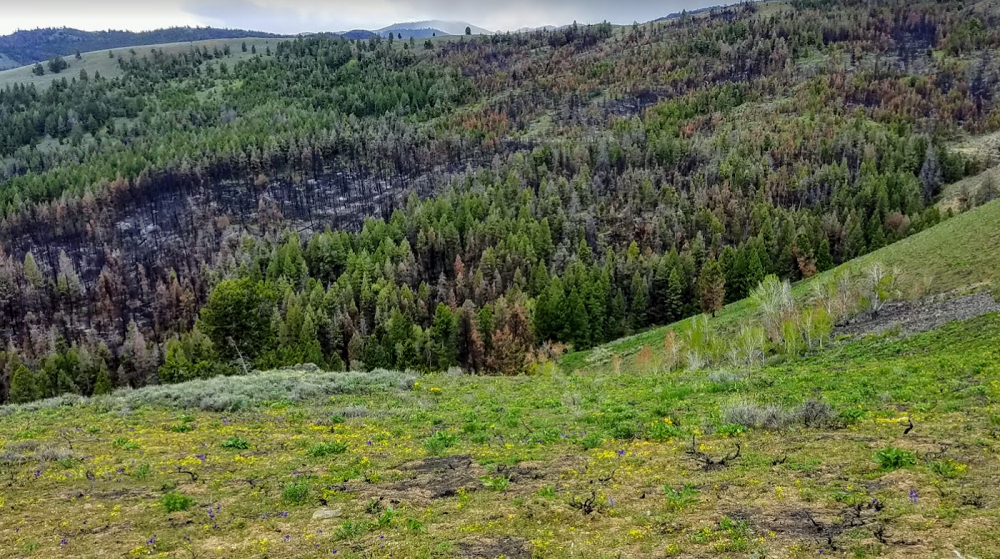
Wildfire. It stirs humans to terror. And it can be terrible, especially when interacting with human habitation. But nature can be different, especially when in good health in the first place.
And so that’s how we now see it. I used to work on the other side, as a wildland firefighter protecting human developments at the edge of wildlands. But now I see regeneration not only from the fire, but because of it. I see burned areas exhibiting new levels of expression of missing species; of grasses and forbs that were suppressed by sagebrush or timber.
And so, in fire, I see beauty. The mosaic it creates is the foundation of diversity. And in nature, even in us, as people, diversity is strength.
And so, I am grateful for the Rabbit’s Foot. The impression left by it is astoundingly beautiful.
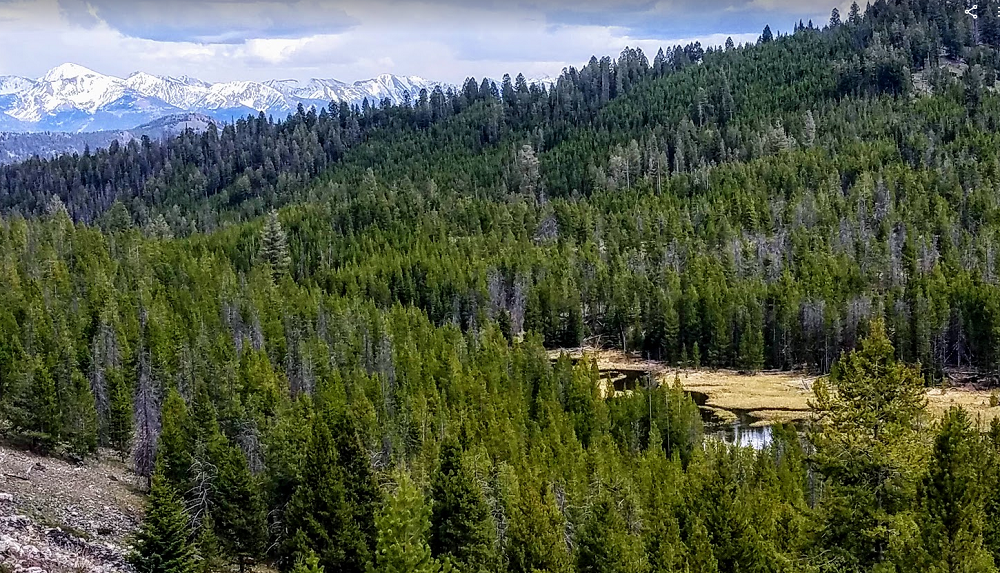
Happy Trails.
Glenn, Caryl, Cowboys & Cowgirls at Alderspring Ranch
For 26 years, handcrafting unparalleled flavor and wellness while regenerating wild landscapes. Wild Wellness Delivered.
Thanks for following along on this summer’s grazing journey through reading our newsletter! Don’t forget this week’s discounts for you readers only! Here those are again in case you missed them:
Flash: Freshly Made Summer Sausages! Get 20% off using “fresh for summer” at checkout until Sunday the 2nd at midnight. Find summer sausages here.
New Product: Pork-Beef Breakfast Sausage (limit 2 per person due to limited quantities)! Find our new Pork-Beef Breakfast Sausage here.
Fifteen on Flap Steaks, Flatirons, and Flank Steaks
You readers can take fifteen off using “the long of it” until Sunday June 2 at midnight. Limit two of any one kind of steak to spread the longitudinal love. Find flatirons, flanks and sirloin flaps here.




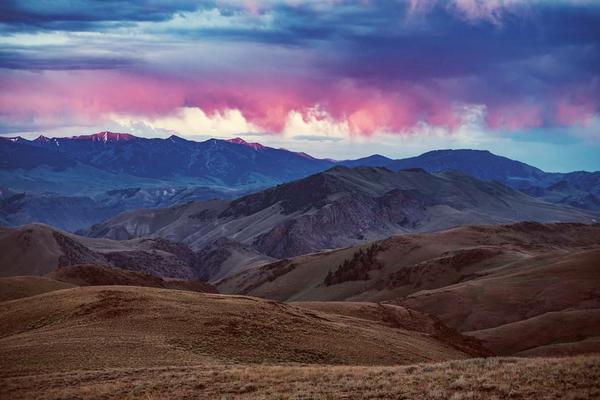
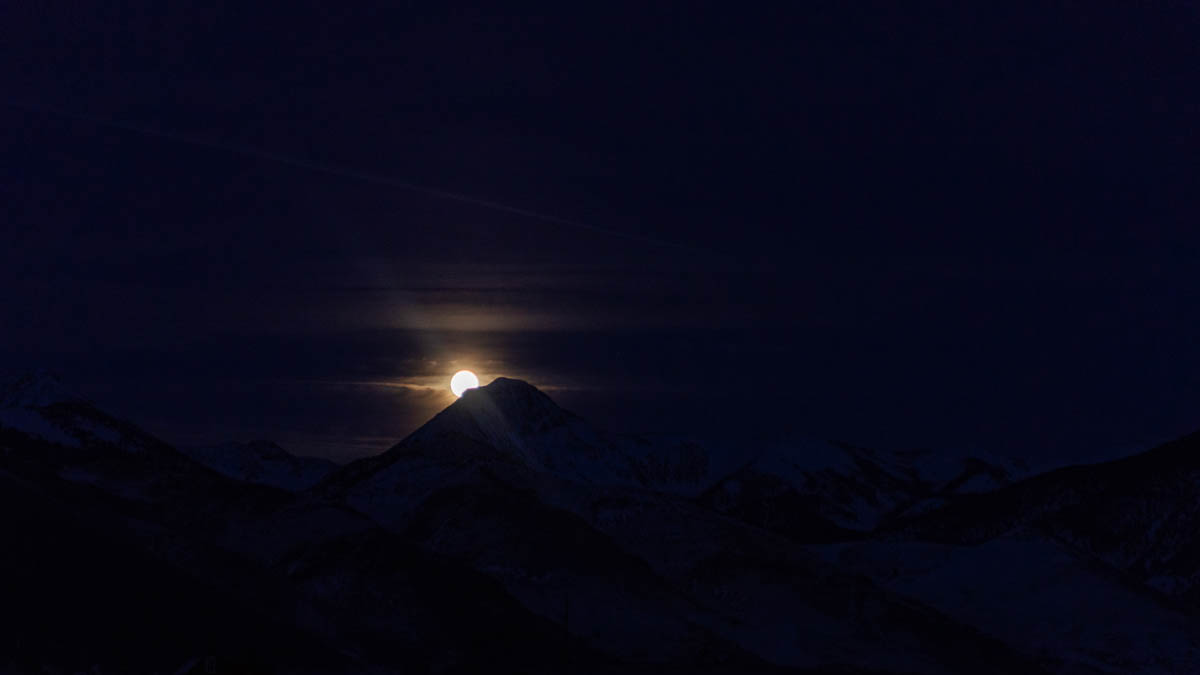

Annie Humke
In the “formerly sagebrush dominated hillside” photo, is that blue camas I see growing there? If so, we had a lot of it in the hills north of Eagle, ID, this year, more than I’ve seen in a long time. Beautiful! Thanks for sharing your post fire discoveries of land survival and healing.
Caryl Elzinga
Hi Annie
Sorry I didn’t get to your comment in a timely way! This year does seem to be an exceptional year for wildflowers, more dense and larger than I’ve seen in my many years botanizing in Idaho. It’s too dry for camas up on this part of our range. Those are little larkspur. A little lower than this the blue Penstemons are going crazy as well. So beautiful.
Cindy Salo
Thanks for the post-Rabbit Foot Fire update. I’m delighted to hear the water retention crew survived and is hard at work slowing runoff, increasing infiltration, and improving fish habitat. Thanks, beavers.